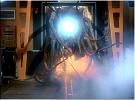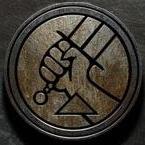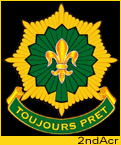RAM
Posts: 402
Joined: 5/1/2000
From: Bilbao,Vizcaya,Spain
Status: offline

|
Heya Lemurs!
quote:
ORIGINAL: Lemurs
The world is probably coming to an end soon as I completely agree with Nikademus' points.
The Hurri2 was not particularly obsolete in the PTO in '41-'42. It was essentially the most maneuverable aircraft the Allies had in the PTO at this time. The Hurris only real weakness was its top speed.
Is a strange mix of agreement and disagreement there. By saying that the Hurri2 wasn't "particularly obsolete" in the PTO in 1941-42 I guess you're pointing out that in the ETO they were badly outmatched by the german fighters. However if a plane which at the ETO stands little chance, but in the PTO was "not particularly obsolete" means the japanese oposition was of much less quality as that of the german.
In short: what your sentences seem to say say implicitly is that the Ki-43 compared very poorly with the best models England and Germany had at the moment (Spitfires, 109s and 190s). So the Ki-43 could hardly be called a "good" fighter for 1941-42...
quote:
I essentially hate the P40 line but you have to give it credit for tough construction and high speed. Boom & zoom was of questionable value at this stage of the war defensively as the allied aircraft had limited climb rates.
Sure, you stayed alive but you just left the battle and that Oscar is now attacking your bombers or escorting its own bombers succesfully.
As I told Nikademus before, that may be true sometimes, but the rest of the times is not. Diving away doesn't mean you're disengaging. Sometimes yes, but not all the times.
Diving away means you may be gaining separation to build up your energy by zooming back, and a possible tactical advantage. If the enemy can't follow your dive he's out of options to follow and kill you.
If the enemy leaves the chase, then you're free to zoom, win back altitude for the speed you've won in the dive, and re-enter the fight at will after some minutes of winning energy and, if possible, tactical advantage.
if the enemy doesn't leave the chase, then he can't be killing your bombers or escorting his own's...as he is trying to keep pace with you...but as you're in a faster plane with much better diving qualities, he won't catch you.
it's a no-no for the Oscar here.
quote:
Someone mentioned the Oscars poor top speed compared to P36, P40, F4f. That is a bad comparison as the F4f as far as i know never fought an Oscar, and the -4 could only do 318 with a much slower acceleration than the Oscar.
The P36, depending on armour or lack of, flew from 322 to 348. The 322, 328 speed P36s again were only slightly better than the Oscar and again with low acceleration.
Only the P40 shows the ability to dictate when & where to an Oscar. In SE Asia in '41-'42 there were not that many P40s.
which was exactly the reason why the Oscar didn't suck from the very start of the war. They were flown by very competent battle hardened pilots against a very low quality opponent flying in flying coffee cups...
quote:
One gaff everyone still makes is like Gary Grigsby in BoB giving the Hurri & Spit a lower maneuver value because of their carberateur. That problem was fixed by the end of July '40 by Rolls Royce field replace kits.
Just a Battle of Britain legend that will not die.
That's not really true. Floating carburator problems were not adressed until mid-42 with the introduction of the Spitfire IX with modifications made into the carburator to ensure the engine cutted for the first seconds of a -G maneouver (if the move was longer, the engine still cutted...the Merlins never had the highly efficient direct injection of the 109s which allowed for any kind of negative G maneouves). The Spitfires V still had that problem, and until 1943 (when all the spitfire fleet was retrofitted with them) there were quite some planes with the inverted G engine cutting. Many Spitfire Vs were still flying in 1943 (in fact many of them did see service until european V-day), so that was indeed still a trouble for 1942.
quote:
Same with high speed maneuverability problems.
Essentially every country made changes in thier aircraft even without changing model numbers.
The Oscar & Zero were both known to have high speed control problems before the war started. Like several Allied aircraft i could name.
I don't think any allied aircraft by 1941 had the horrible high speed controlability problems the zero and Oscar had. If you think otherwise, I would like to hear to which plane do you refer :).
quote:
Horikoshi made various changes to the aircraft which eliminated virtually all of these problems. On the Zero this ended up creating a weird vibration effect that no one, as far as i know, has ever been able to really explain.
They didn't eventually eliminate the problems. They somehow made them less extreme. The a6M5 could dive at much higher speeds than the A6M2...however it was still a lousy plane on high speeds because the controls ,albeit not stiff as concrete anymore at high Indicated speeds, were still very hard.
quote:
The Nakajima team was more sucessfull than the Mitsubishi
team in their quest to rid the Oscar of high speed control problems and by April-May '42 they had done so.
I have read of the American test of an Oscar 2 from New Guinea saying that it still had heavy controls and i do not know what to say.
I have read the Nakajima accounts of the changes they made
and their test pilots comments and itt seemed like they fixed the majority of the problem.
I also have read that the Oscar never got its hispeed control problems fixed. If you can give me the changes the japanese did to the plane, and the source from where your data comes, then we might be able to discuss that more in-depth :).
quote:
Probaly the plane that had the biggest problem with controls was the Me109. Never was fixed as half the problem was the narrow cockpit, same problem the P39 had.
that's not what the finnish and germans said about the 109. The Messerschmitts up to the early G6 had problems with stiff aileron contros at speeds over 400mph IAS, however aileron and rudder authority were complete. However ,from the late G6 onwards (late G6, G14, G10, K4) the ailerons of the 109s had flettner tabs which greatly helped high speed aileron controlability and reduced a lot the stick forces required to roll the plane at those speeds.
< Message edited by RAM -- 10/18/2004 10:47:56 PM >
_____________________________
RAM
"Look at me! look at me!!!
Not like that! NOT LIKE THAT!!!"
|
 Printable Version
Printable Version





















 New Messages
New Messages No New Messages
No New Messages Hot Topic w/ New Messages
Hot Topic w/ New Messages Hot Topic w/o New Messages
Hot Topic w/o New Messages Locked w/ New Messages
Locked w/ New Messages Locked w/o New Messages
Locked w/o New Messages Post New Thread
Post New Thread